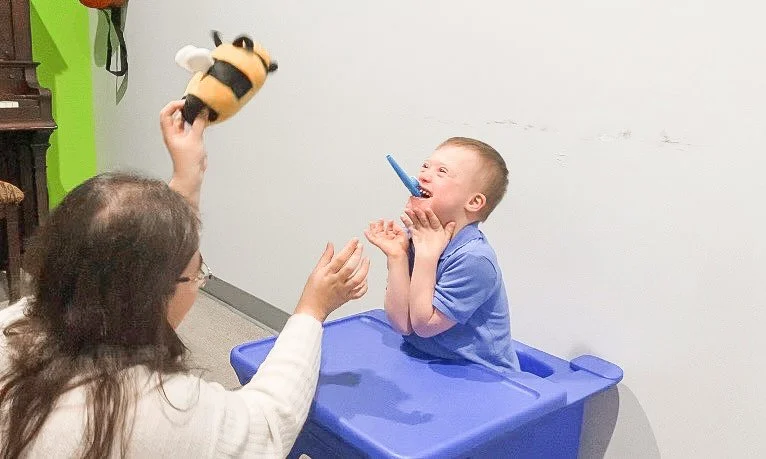Neurologic Music Therapy (NMT) is an evidence-based system of music therapy that uses neuroscientific research targeting music’s effect on the brain. Neurologic music therapy techniques focus on areas such as cognition, speech and language, and motor dysfunctions caused by neurologic impairments or neurodevelopmental disorders. A music therapist with training in NMT techniques can help individuals accomplish their non-musical goals by using specific music interventions to reroute neuropathways.
Individuals diagnosed with Down Syndrome, also known as Trisomy 21, can have delayed speech and language development or display difficulties in their articulation and pronunciation. This can be an area where NMT techniques for speech or language could provide beneficial results in treatment. One case study conducted by Blythe LaGasse found that using NMT techniques with a child with Down Syndrome can show beneficial results in expressive communication and oral motor movements after 12 months of treatment.
Three specific NMT techniques that are useful in this population are Oral Motor Respiratory Exercises (OMREX), Developmental Speech and Language Training through Music (DSLM), and Therapeutic Singing (TS).
Oral Motor Respiratory Exercises (OMREX) are techniques that focus on the strengthening of the individual's facial muscles. These muscles, essential in the production of speech, can be strengthened by the vocalization of sounds through the use of wind instruments. Another aspect of OMREX looks to improve respiratory control, which can be accomplished through inhalation and sustained exhalation through the same wind instruments. To accomplish these, a music therapist might use harmonicas, recorders, melodicas, or kazoos to create fun exercises for their client to engage in.
Developmental Speech and Language Training through Music (DSLM) is another NMT technique that focuses on the improvement of functional communication and is especially useful with children. Singing, chanting, and instrument play are key areas used in treatment but come alongside engaging materials and experiences to promote the production of speech. A music therapist might use an engaging book and sing through its contents, providing musical stimuli while also prompting the repetition of sounds or words.
Therapeutic Singing (TS) is another useful NMT technique in promoting speech production in individuals with Down Syndrome. Singing through client-preferred songs is an essential part of most music therapy sessions; however, in the case of individuals with Down Syndrome, it can be useful in promoting the use of specific words or phrases through song. A music therapist can focus on areas such as breath control, pacing of speech, and even visual scanning as a client follows along to the presented lyrics.
Overall, there are several beneficial ways a music therapist can use NMT techniques to achieve great results when working with an individual with Down Syndrome when targeting speech and communication goals. The music therapist can take these techniques and add fun components such as visuals, props, or games to create a setting in which the client is working hard on these neurologic tasks while still having fun in the process.
-Beatriz Leal, Music Therapy Intern
References
Bruscia, K. E. (2012). Case examples of music therapy for developmental problems in learning and communication. Barcelona Publishers. http://ebookcentral.proquest.com/lib/uiwtx/detail.action?docID=3117658
Key elements of the NMT evidence-based system. (2018, May 12). The Academy of Neurologic Music Therapy. https://nmtacademy.co/key-elements-of-nmt/
Thaut, M. H., & Hoemberg, V. (Eds.). (2014). Handbook of neurologic music therapy. Oxford University Press.
WHAT IS NEUROLOGIC MUSIC THERAPY. (n.d.). NMTSA. Retrieved February 17, 2024, from https://www.nmtsa.org/what-is-nmt

